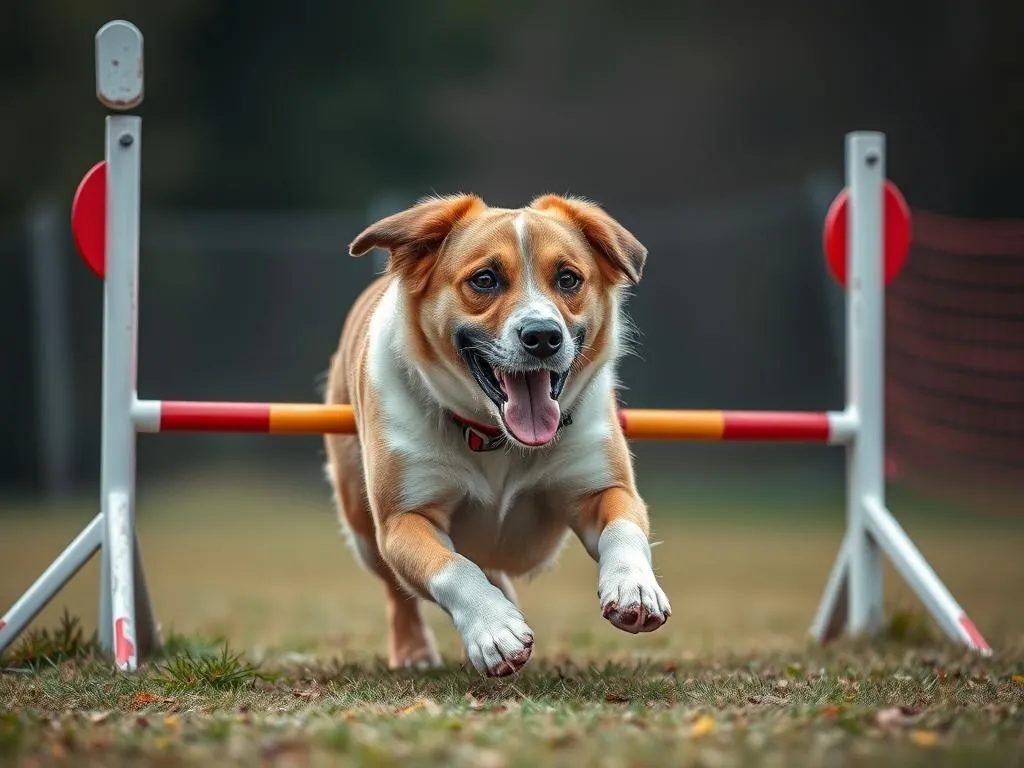
Introduction
Dog agility has rapidly emerged as a popular sport for pet owners and their furry companions. This exciting competition involves navigating a timed obstacle course, showcasing not only the skills of the dog but also the bond and communication between the handler and their pet. As the sport gains traction, many aspiring participants are left wondering: how much does dog agility cost? Understanding the financial commitment involved in this beloved pastime is essential for any dog owner considering participation.
The costs associated with dog agility can vary significantly based on several factors, including geographic location, the level of competition, and individual preferences regarding training and equipment. In this blog post, we will delve into the various expenses that come with engaging in dog agility, from initial investments to ongoing costs, and provide a comprehensive understanding of what to expect.
Understanding Dog Agility
What is Dog Agility?
Dog agility is a fast-paced sport where dogs navigate through a timed obstacle course consisting of jumps, tunnels, weave poles, and more. Developed in the late 1970s in the UK, the sport has evolved into a competitive arena with numerous organizations hosting events worldwide. Each agility course is designed to test a dog’s speed, accuracy, and obedience, making it an exhilarating experience for both dogs and handlers.
Benefits of Dog Agility
Participating in dog agility offers a plethora of benefits for both the dog and the owner.
- Physical Benefits: The sport provides an excellent source of exercise for dogs, helping to maintain a healthy weight and improve overall fitness.
- Mental Stimulation: Agility challenges dogs intellectually, enhancing their problem-solving skills and focus.
- Bonding Experience: Training and competing together fosters a strong bond between dogs and their owners, creating lasting memories.
- Socialization: Agility provides opportunities for social interaction, with handlers and dogs meeting like-minded individuals in the community.
Initial Costs
Dog Selection
One of the first considerations when embarking on the journey of dog agility is the selection of an appropriate dog. Factors influencing this decision include:
- Breed: Some breeds are naturally more agile and have a higher propensity for performance in agility sports. Breeds like Border Collies, Australian Shepherds, and Shetland Sheepdogs are popular choices.
- Age: Younger dogs may be more adaptable to training, while older dogs might have already developed agility skills.
- Training: If you choose to adopt or purchase an already trained agility dog, the costs can vary significantly.
On average, the cost of adopting a dog suitable for agility ranges from $100 to $1,500, depending on whether you choose to adopt from a shelter or purchase from a breeder.
Training Costs
Once you’ve selected your dog, the next step is training. Professional training classes are available in various formats:
- Group Classes: These classes typically cost between $100 and $300 for a series of lessons. They are a great way to learn in a social setting.
- Private Lessons: If you prefer one-on-one attention, private lessons can range from $50 to $150 per session.
Alternatively, many owners opt for DIY training resources such as books, online courses, or video tutorials, which can be a cost-effective way to learn at your own pace.
Equipment Costs
Essential gear for dog agility includes:
- Jumps: $30 – $300, depending on quality and design.
- Tunnels: $60 – $200 for collapsible options.
- Weave Poles: $50 – $150, with DIY options available.
If purchasing equipment seems daunting, consider renting or borrowing from local clubs or friends. For those on a tight budget, many owners have successfully built their own agility equipment, often spending significantly less than they would on commercial options.
Ongoing Costs
Competition Fees
Entering agility competitions can add up quickly. Fees typically range from $10 to $50 per trial, depending on the organization and level of competition. Higher-level competitions, such as national championships, may have additional fees associated with registration and entry.
Membership and Registration Fees
To participate in formal competitions, you’ll need to register with agility organizations like the AKC (American Kennel Club) or UKC (United Kennel Club). Membership fees can vary:
- AKC Membership: Approximately $39 per year.
- Event Registration: Costs vary based on events, typically ranging from $20 to $50.
Maintenance and Health Costs
Regular veterinary care is crucial for maintaining your dog’s health, especially for those involved in agility. Routine costs may include vaccinations, check-ups, and preventative medications, averaging around $300 to $700 annually.
Nutrition is also a vital aspect of your dog’s performance. High-quality dog food can range from $40 to $100 per month, depending on the brand and dietary needs. Additionally, some owners may consider supplements aimed at joint health or energy levels, which can add to the overall costs.
Additional Considerations
Travel Expenses
If you plan to compete frequently, travel costs can become a significant factor. Expenses may include:
- Gas: Depending on your location, this could range from $20 to $100 per trip.
- Lodging: Hotels or camping fees can vary widely, averaging $50 to $150 per night.
- Meals: Dining out during competitions can add another $10 to $50 per day.
To minimize these costs, consider carpooling with other competitors or opting for budget-friendly accommodations.
Insurance
Pet insurance can provide peace of mind for agility owners, covering unexpected health issues or injuries. Monthly premiums can range from $20 to $60 depending on the coverage level and provider. Be sure to review policy details carefully to ensure that it suits the needs of an active agility dog.
Time Commitment
In addition to financial considerations, it’s essential to understand the time commitment involved in training and competing. Regular practice sessions, often several hours a week, are necessary to maintain and enhance your dog’s agility skills. This investment of time can significantly affect your overall enjoyment and engagement with the sport.
Budgeting for Dog Agility
Creating a Dog Agility Budget
Establishing a budget for dog agility involves accounting for both initial and ongoing costs. Here’s a step-by-step guide to help you create a realistic budget:
- List Initial Costs: Include dog selection, training, and equipment.
- Estimate Ongoing Costs: Factor in competition fees, health care, nutrition, and travel expenses.
- Review and Adjust: Regularly assess your budget and adjust based on actual expenditures.
Using tools and apps designed for budgeting can assist in tracking your finances effectively.
Cost-Saving Tips
Finding ways to save money while enjoying dog agility is possible. Consider the following strategies:
- Community Resources: Many local agility clubs offer resources, training, and equipment at reduced rates for members.
- Sponsorships: Some businesses may sponsor competitors in exchange for advertising, helping to offset costs.
- Joining Local Clubs: Becoming part of a community can provide access to shared resources, equipment, and training opportunities, reducing overall expenses.
Conclusion
Engaging in dog agility is a rewarding experience that fosters a unique bond between dogs and their owners. While it’s crucial to consider how much does dog agility cost, the expenses involved should be weighed against the multitude of benefits it offers. From improved physical health to enhanced communication and social opportunities, the investment can lead to a fulfilling journey for both you and your canine companion.
Ultimately, understanding the costs associated with dog agility allows you to plan effectively and enjoy the sport to its fullest. As you embark on this exciting adventure, keep in mind that the joy and satisfaction gained from participating in dog agility far outweigh the financial investment.









